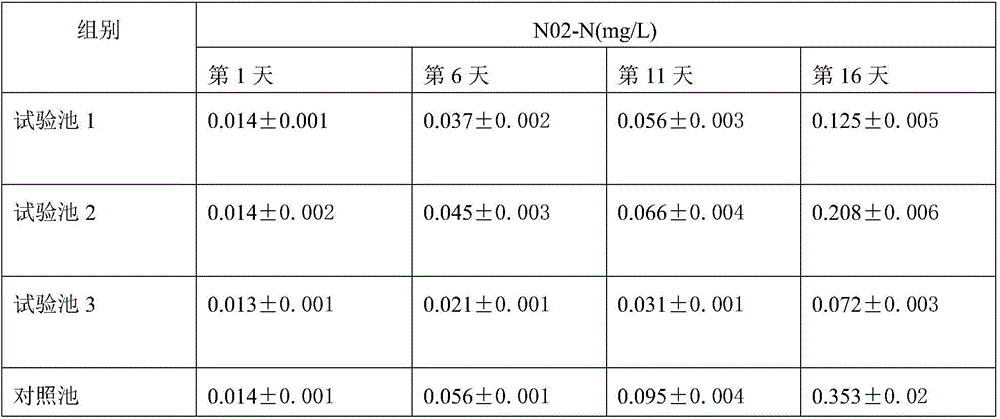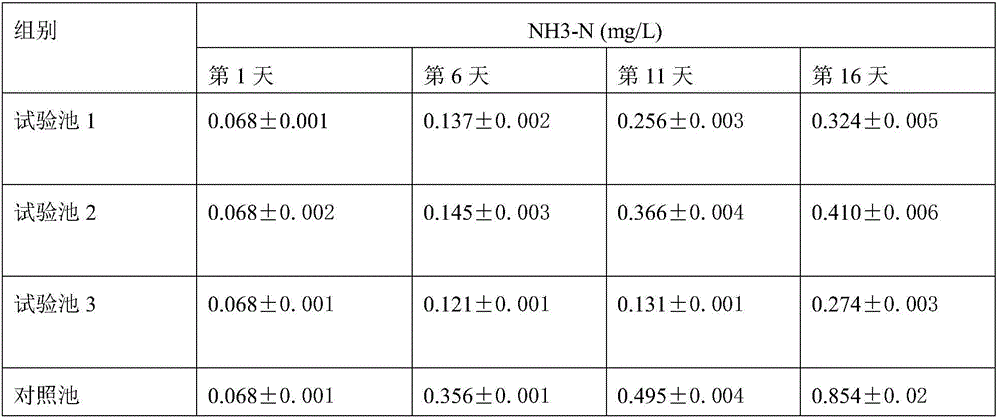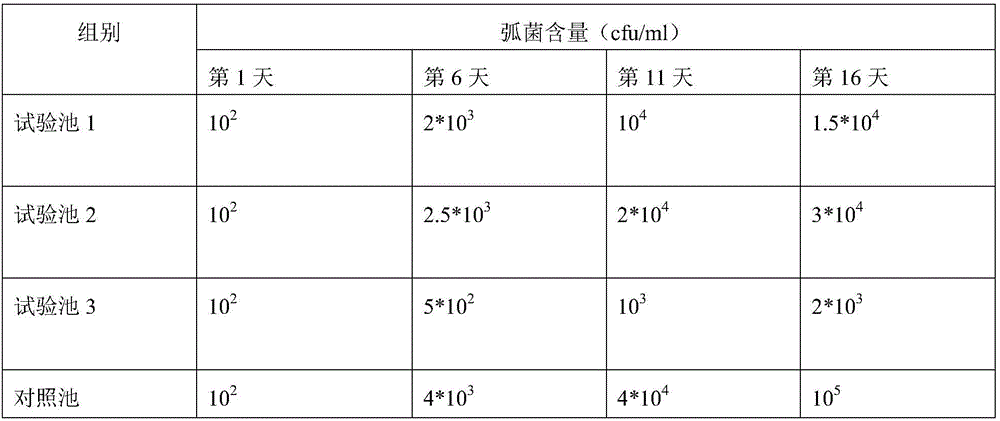Microorganism regulating method for penaeus japonicus larva growing
A technology of microorganisms and compound microorganisms, which is applied in food science, animal feed, animal feed, etc., can solve the problems of compound and effective comprehensive utilization technology of beneficial microorganisms, unsustainable regulation of microorganisms, and incomplete effect of shrimp seedlings, etc., to achieve stable water bodies environment, reducing the incidence of shrimp diseases, and improving the success rate of seedling raising and emergence rate
- Summary
- Abstract
- Description
- Claims
- Application Information
AI Technical Summary
Problems solved by technology
Method used
Image
Examples
Embodiment 1
[0033] 1) Activation of compound microbial preparations
[0034] Add 200g of Bacillus subtilis, Saccharomyces cerevisiae, and Lactobacillus casei with a mass ratio of 8:1:1 to a 50L bucket with a volume ratio of seawater to freshwater of 1:4, and the initial bacterial content is Bacillus subtilis ≥2*10 10 CFU / g, Saccharomyces cerevisiae ≥2*10 7 CFU / g, Lactobacillus casei≥2*10 8 CFU / g, inflated and activated for 3-4 hours, dissolved oxygen content ≥ 7mg / L, bacteria content ≥ 10 after activation 5 CFU / mL;
[0035] 2) Addition amount of compound carbon source
[0036] The compound carbon source desulfurized molasses and astragalus polysaccharides were fed to prawn larvae as companion baits at a mass ratio of 10:1. When waiting for wet bait, the amount of compound carbon source added is 1 / 20 of the bait quality per meal;
[0037] 3) Timing of adding compound microbial preparations and compound carbon sources
[0038] The development process of Penaeus japonicus seedlings in...
PUM
 Login to View More
Login to View More Abstract
Description
Claims
Application Information
 Login to View More
Login to View More - R&D
- Intellectual Property
- Life Sciences
- Materials
- Tech Scout
- Unparalleled Data Quality
- Higher Quality Content
- 60% Fewer Hallucinations
Browse by: Latest US Patents, China's latest patents, Technical Efficacy Thesaurus, Application Domain, Technology Topic, Popular Technical Reports.
© 2025 PatSnap. All rights reserved.Legal|Privacy policy|Modern Slavery Act Transparency Statement|Sitemap|About US| Contact US: help@patsnap.com



